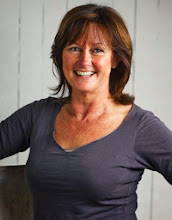For the past few weeks though, my culinary skills have been put to the test as I have been writing recipes for the Dukan diet (fishcake recipe on left), a gluten-free book and a dairy-free feature! Needless to say I am confused when cooking now, wondering that I need to leave something out but can't remember what - fat, sugar, wheat, milk......I am seriously thinking I will need a good feed at the end of this lot!
But what is great is that sometimes a really tasty recipe comes from me trying to avoid using the most obviously ingredient., and this week is was a dairy-free chocolate mousse.
Chocolate Mousse (*and milk-shake!)
Serves 4
100g dates, stoned
50g almonds
100g dark chocolate, roughly
chopped
200g tofu, drained
·
Place the dates in a bowl with the almonds and
pour over 200ml of boiling water.
Leave to stand for 30 minutes or longer.
·
Melt the chocolate in a bowl over a pan of
simmering water.
·
Place the soaked dates and almonds, melted
chocolate and tofu into a food processor and blend until smooth. Pour into glass dishes and chill.
*For the milk shake – add 1 tbsp cocoa powder to the soaking
dates and almonds, omit the chocolate, and then blend with the tofu and enough soya or oat milk to make
it smooth and creamy. For a
sweeter touch, add a tsp of honey or blackstrap molasses.











